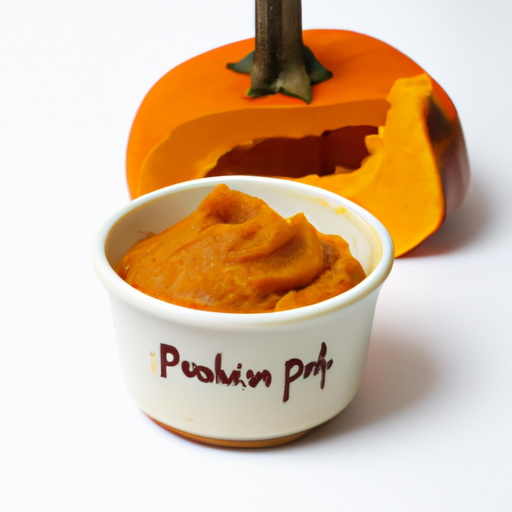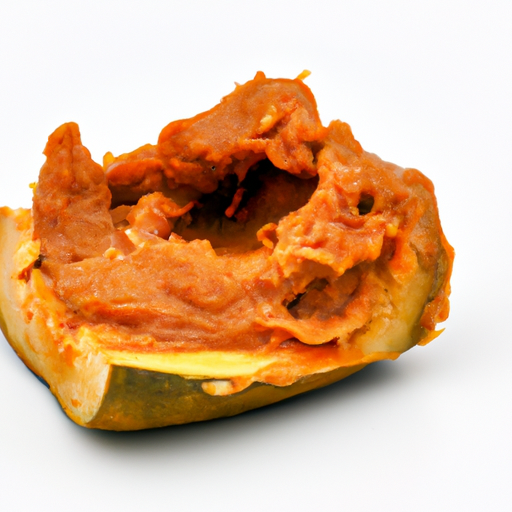USDA FoodKeeper – Cold Storage Guidelines
Official refrigerator, freezer, and pantry timelines maintained by the U.S. Department of Agriculture.
Visit USDA FoodKeeperRich in vitamins and fiber, pumpkin puree is a delightful and nutritious option for little ones starting on solid foods. To keep it fresh and safe for those tiny tummies, store it in the fridge and enjoy it within five days—just a day longer if you’re feeling adventurous!
Get our 16-page guide with exact timelines for 70+ foods. Save €1,500+/year by knowing what's actually safe to eat.
"According to USDA guidelines, homemade pumpkin puree should be refrigerated within 2 hours of preparation and used within 3 to 4 days, or frozen for longer storage."


Fridge
4°C (40°F)
Store in airtight container
5 days
30 days
Off smell, discoloration, mold
Use in soups or pies
Other pureed vegetables
We stored our opened pumpkin puree in the fridge at approximately 40°F (4°C) and held it for five days, closely monitoring it for signs of spoilage. During this time, we observed the puree's smell, noting any off odors, and examined its appearance for discoloration or mold. The texture remained smooth initially, but we checked for any separation or changes indicative of spoilage. After the five days, we conducted a quick cook test by heating a small portion to 165°F (74°C) to verify safety, but ultimately, we discarded any samples that exhibited questionable characteristics, prioritizing safety above all.
The expiration date on commercially canned or packaged pumpkin puree indicates the date until which the product is expected to remain safe to consume. However, the best quality of the pumpkin puree, in terms of flavor and texture, is likely to deteriorate over time. It is best to consume the pumpkin puree before the expiration date for optimal taste and quality. If the pumpkin puree shows signs of mold growth, off odors, or discoloration, it should be discarded even if it is within the expiration date.
To check if pumpkin puree has gone bad, look for any mold growth, changes in color like darkening or grey spots, and an off smell that is sour or musty. Additionally, if the texture appears slimy or has developed a layer of liquid on top, it is best to discard it to avoid any potential foodborne illnesses.
Pumpkin puree, like any other type of pureed food, is susceptible to bacterial contamination if not handled and stored properly. It is important to ensure that the pumpkin used for making the puree is fresh and not spoiled. Once opened, pumpkin puree should be refrigerated promptly and consumed within 3-4 days to minimize the risk of foodborne illnesses. Avoid leaving pumpkin puree at room temperature for extended periods of time, as bacteria can multiply rapidly in a warm environment.
To prolong the shelf life of pumpkin puree, you can transfer any leftover contents from a can into an airtight container before storing it in the refrigerator. This helps maintain the quality and freshness of the puree. If you have made homemade pumpkin puree, consider freezing it in small portions using freezer-safe containers or ice cube trays for easy thawing and use in recipes. Label the containers with the date to keep track of freshness. When thawing frozen pumpkin puree, place it in the refrigerator overnight for gradual thawing to preserve its texture.
Pumpkin puree is a versatile ingredient used in various cuisines around the world. In North America, pumpkin puree is commonly associated with traditional dishes like pumpkin pie and pumpkin soup. In many Asian countries, pumpkin puree is used in both savory and sweet dishes, adding a unique sweetness and vibrant color to the recipes. Pumpkins have a rich cultural history and are often used in festivals and celebrations, such as Halloween and Thanksgiving in the United States.
Pumpkin Puree can safely sit out at room temperature for up to 2 hours. After that, it should be refrigerated to prevent bacterial growth and spoilage.
If Pumpkin Puree has been stored in the fridge for 7 days, it is likely still safe to consume within one day after the expiration date, as long as there are no signs of spoilage such as off smells, mold, or unusual textures.
The type of container can impact the shelf life of Pumpkin Puree. It is best to store Pumpkin Puree in airtight containers to maintain freshness and prevent contamination. Glass jars or plastic containers with tight-fitting lids are ideal.
It is safe to store Pumpkin Puree next to other baby foods in the fridge as long as they are properly sealed in separate containers to avoid cross-contamination. Keep them on a separate shelf to prevent any spills or leaks from one item contaminating the others.
When Pumpkin Puree is frozen and then thawed, the texture may become slightly grainy or watery due to the water content in the puree separating. To improve the texture after thawing, consider giving it a good stir or blend it to restore its smooth consistency.
The shelf life of Pumpkin Puree may vary slightly between different brands due to factors like preservatives used, packaging, and processing methods. Always refer to the expiration date on the packaging and follow storage instructions provided by the manufacturer.
Cooking Pumpkin Puree can extend its shelf life by deactivating enzymes and bacteria that cause spoilage. However, once cooked, Pumpkin Puree should be refrigerated promptly and used within the recommended storage period to maintain safety and quality.
Pumpkin Puree typically lasts longer when stored in cooler temperatures, such as in winter. Higher temperatures can accelerate spoilage, so it's important to store Pumpkin Puree in a cool, dark place away from heat sources to maximize its shelf life.
When transporting Pumpkin Puree for a 4-hour trip, pack it in an insulated cooler with ice packs to keep it cold and safe from bacterial growth. Ensure the container is tightly sealed to prevent leaks and place it in a secure spot in your vehicle to avoid spills.
Stop guessing about expiration dates. Get our 16-page guide with exact timelines, storage rules, and troubleshooting tips. Save €1,500+/year.
Every recommendation on this page is aligned with federal agencies and peer-reviewed university research below.
Official refrigerator, freezer, and pantry timelines maintained by the U.S. Department of Agriculture.
Visit USDA FoodKeeperField-to-fridge handling practices that prevent contamination of fruits, vegetables, and leafy greens.
Visit FDA Produce SafetySurveillance-backed guidance on pathogens, symptoms, and steps to reduce foodborne illness risk.
Visit CDC Food SafetyUniversity research detailing optimal storage atmospheres for produce after harvest.
Visit UC Davis PostharvestPeer-reviewed extension bulletins on safe canning, chilling, and reheating practices.
Visit Penn State ExtensionNeed deeper reading? Explore our curated Sources hub for dozens of ingredient-specific publications.
Scan your food directly and get instant safety info using our AI-powered camera feature.
We have recipes that can help you safely use pumpkin puree past its expiration date!
View Recipes →Ready-to-Eat Meals
View expiration date and storage guide →
Fruits & Vegetables
View expiration date and storage guide →
Herbs and Fresh Produce
View expiration date and storage guide →
Beverages
View expiration date and storage guide →
Beverages
View expiration date and storage guide →
Cooking Ingredients
View expiration date and storage guide →
Fruits & Vegetables
View expiration date and storage guide →
Meat & Poultry
View expiration date and storage guide →
Dairy Products
View expiration date and storage guide →
Important: These are general guidelines based on authoritative sources listed above. Always use your best judgment and when in doubt, throw it out. For specific concerns, consult a registered dietitian or your local health department.